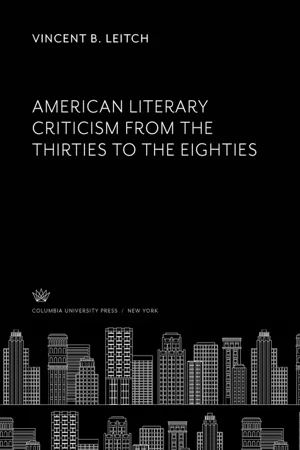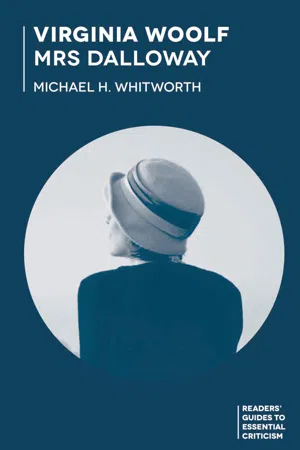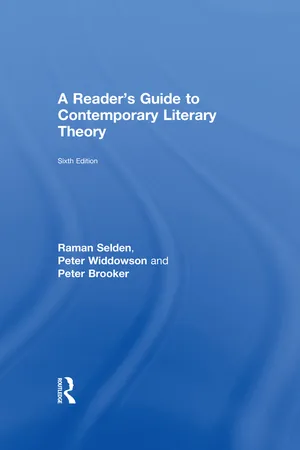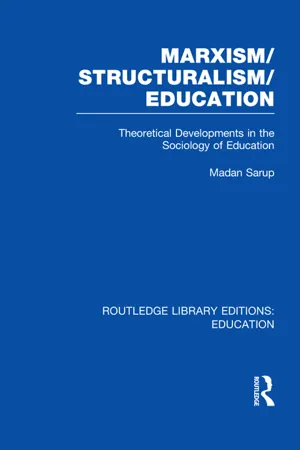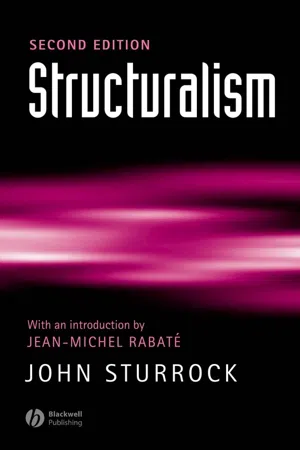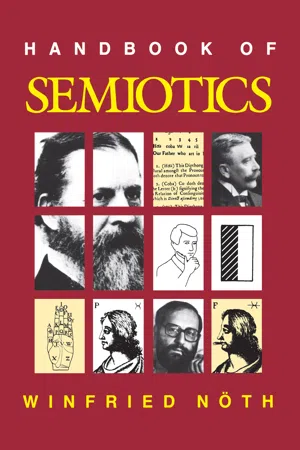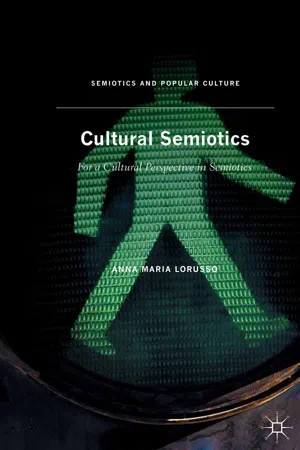Literature
Structuralism Literary Theory
Structuralism in literary theory focuses on analyzing literature by examining the underlying structures and systems that shape the text. It emphasizes the interconnectedness of elements within a literary work and seeks to uncover the underlying patterns and codes that govern its meaning. Structuralist literary theory often explores the relationship between language and culture, and how these factors influence the production and interpretation of literature.
Written by Perlego with AI-assistance
Related key terms
1 of 5
10 Key excerpts on "Structuralism Literary Theory"
- Vincent B. Leitch(Author)
- 2019(Publication Date)
- Columbia University Press(Publisher)
Similarly, the attention paid to history by Guillen and Culler, for example, was limited to literary history—the history of literary genres, conventions, and codes—not eco-nomic, social, or political history. The theory of literature propounded by critics working in the structuralist-semiotic tradition minimized its expres-sive, mimetic, affective, and sociological dimensions. Emphasis rarely fell on how or why poets produced texts, or how much or little poetry reflected reality, or how deeply it moved or stirred particular readers, or how fully it embodied elements of its sociohistorical contexts. By definition, the refer-ential function of literature was at most a secondary matter, though Scholes in later years tried to restore it to prominence—which was one consequence of his turn to cultural studies. With regard to the affective aspects of literary discourse, structuralists and semioticians cared more about reading than about readers, more about general codes and conventions delimiting re-sponse than about personal reactions and associations. The institution, not the individual, was the site of inquiry. Depending on the critic, the text dissolved more or less completely into deep structure, generic grammar, matrix, founding trope, or literary convention. Thus, literary semiotics displayed a framework of distinctive features distinguishing it sharply from the approaches of competing contemporaneous critical schools and move-ments. 2ÓO L I T E R A R Y S T R U C T U R A L I S M A N D S E M I O T I C S Much of the work produced by American Semiotic Critics was for the purpose of demonstrating the values, virtues, and powerful techniques available in the structuralist tradition. Because these critics were so often engaged in promoting structuralism and semiotics, they presented them-selves as reformers, usually of a liberal sort.- eBook - PDF
- Michael Whitworth(Author)
- 2015(Publication Date)
- Bloomsbury Academic(Publisher)
CHAPTER FOUR Structuralism and Post-Structuralism From Linguistics to Criticism The readings of Mrs Dalloway seen in the previous two chapters based their claims to its value on it, or its author, possessing a politics or a phi-losophy. While many of these readings display sensitive attention to the fine details of the text, their primary focus is on what the novel means rather than how it makes meaning; they are interested in hermeneutics rather than poetics. 1 Moreover, they assume that a coherent singular meaning or philosophy can be found. The rise of structuralist literary criticism, and, immediately succeeding it, post-structuralism, created alternative emphases. Literary structuralism begins in the structuralist linguistics of Ferdinand de Saussure (1857–1913); it also drew on the later structuralist anthropology (notably the work of Claude Lévi-Strauss [1908–2009]) that had taken inspiration from Saussure’s notion of a science of signs. Saussure had argued that linguistic signs were arbitrary, relational and constitutive. They were arbitrary in that there is nothing, for exam-ple, inherently foot-like about the English word ‘foot’ realized either as sound or writing. They are relational in that the meaning of the sign depended on its relation to other signs: what we call a (bodily) foot is defined by its relation to other body parts. The sounds of a language (its phonemes) are also defined relationally: in English the contrast between /b/ and /v/ signifies (‘bat’ and ‘vat’ mean different things), whereas in other languages, /v/ would simply sound like a badly pronounced /b/. Finally, and most controversially, signs are constitutive : the kinds of distinction that a language draws will shape reality for speakers of that language. Meaning is created only within a culturally agreed frame-work. When we use a language, we tend to forget the arbitrariness of that framework; structuralism brings it back into focus. - Raman Selden, Peter Widdowson, Peter Brooker(Authors)
- 2016(Publication Date)
- Routledge(Publisher)
C H A P T E R 4 Structuralism N ew ideas often provoke baffled and anti-intellectual reactions, and this was especially true of the reception accorded the theories which go under the name of ‘structuralism’. Structuralist approaches to literature challenged some of the most cherished beliefs of the ordinary reader. The literary work, it was long felt, is the child of an author’s creative life, and expresses the author’s essential self. The text is the place where we enter into a spiritual or humanistic communion with an author’s thoughts and feelings. Another fundamental assumption which readers often make is that a good book tells the truth about human life – that novels and plays try to ‘tell things as they really are’. However, structuralists have tried to persuade us that the author is ‘dead’ and that literary discourse has no truth function. In a review of a book by Jonathan Culler, John Bayley spoke for the anti-structuralists when he declared, ‘but the sin of semiotics is to attempt to destroy our sense of truth in fiction . . . In a good story, truth precedes fiction and remains separable from it.’ In a 1968 essay, Roland Barthes put the struc- turalist view very powerfully, and argued that writers only have the power to mix already existing writings, to reassemble or redeploy them; writers cannot use writing to ‘express’ themselves, but only to draw upon that immense dictionary of language and culture which is ‘always already written’ (to use a favourite Barthesian phrase). It would not be misleading to use the term ‘anti-humanism’ to describe the spirit of structuralism. Indeed the word has been used by structuralists themselves to emphasize their opposition to all forms of literary criticism in which the human subject is the source and origin of literary meaning. The linguistic background The work of the Swiss linguist Ferdinand de Saussure, compiled and published after his death in a single book, Course in General Linguistics (1915), had a- eBook - ePub
Marxism/Structuralism/Education (RLE Edu L)
Theoretical Developments in the Sociology of Education
- Madan Sarup(Author)
- 2012(Publication Date)
- Routledge(Publisher)
Chapter 4 Structuralism, Literature and Cultural Studies In the first part of this book I looked at some aspects of marxism; in this part the focus will be on structuralism, those theories based on the pioneering work of Saussure on language. Saussurean structural linguistics first provided the methodological impetus to treat other systems of phenomena as ‘languages’. Since the Second World War French structuralism has had an extraordinary impact on social and political thought. Though structuralism constitutes not a unified theory, but a complex network of writings interacting in various ways, there is one core feature: its rejection of the ego. Not only does structural analysis abandon the search for external causes, it refuses to make the thinking subject an explanatory cause. The work of Lévi-Strauss, Barthes, Lacan, and Foucault (along with the texts of Saussure, Freud and Nietzsche which they use) has called into question the notion of the self as subject or consciousness which might serve as a source of meaning and a principle of explanation. In other words, the researches of psychoanalysis, of linguistics, of anthropology have ‘decentred the subject’ in relation to the laws of its desire, the forms of its language, the rules of its actions. The dominant tradition has taken the self as a conscious subject. But once meaning is explained in terms of systems which may escape the grasp of the conscious subject, the self can no longer be identified with consciousness. And as it is displaced from its function as centre or source, the self comes to appear more and more as a construct. Structuralism Structuralism is a method whose scope includes all human phenomena, embracing not only the social sciences (anthropology, sociology, psychology, politics, economics) but also the humanities (literature, history, linguistics) and the fine arts - eBook - PDF
Literary Theory
An Introduction
- Terry Eagleton(Author)
- 2011(Publication Date)
- Wiley-Blackwell(Publisher)
79 Structuralism and Semiotics We left American literary theory at the end of the Introduction in the grip of New Criticism, honing its increasingly sophisticated techniques and fighting a rearguard action against modern science and industrialism. But as North American society developed over the 1950s, growing more rigidly scientistic and managerial in its modes of thought, a more ambitious form of critical technocracy seemed demanded. New Criticism had done its job well, but it was in a sense too modest and particularist to qualify as a hard-nosed academic discipline. In its obsessive concentration on the isolated literary text, its delicate nurturings of sensibility, it had tended to leave aside the broader, more structural aspects of literature. What had happened to literary history ? What was needed was a literary theory which, while preserving the formalist bent of New Criticism, its dogged attention to literature as aesthetic object rather than social practice, would make something a good deal more systematic and ‘scientific’ out of all this. The answer arrived in 1957, in the shape of the Canadian Northrop Frye’s mighty ‘totalization’ of all literary genres, Anatomy of Criticism . Frye’s belief was that criticism was in a sorry unscientific mess and needed to be smartly tidied up. It was a matter of subjective value-judgements and idle gossip, and badly required the discipline of an objective system. This was possible, Frye held, because literature itself formed such a system. It was not in fact just a random collection of writings strewn throughout history: if you examined it closely you could see that it worked by certain objective laws, and criticism could itself become systematic by formulating them. These laws were the various modes, archetypes, myths and genres by which all literary works were structured. At the root of all 3 Structuralism and Semiotics - eBook - PDF
- John Sturrock(Author)
- 2008(Publication Date)
- Wiley-Blackwell(Publisher)
It is understandable that for a number of years Formalism was content to collect literary 'facts' in this way, because it had not been systematically done before, and such a collection was needed if the 'specificity' of literature was to be characterized. This was sound spadework. But it was not enough because it fails to account for our intuition as readers that a given work, be it narrative or poetic, has unity, that, to go for a second time to the arguments of Bakhtin and Medvedev, it is not only 'made' but also '~reated'.~ To grasp the work as a structure restores to it the oneness it might otherwise lose. As a whole, it becomes readily comparable with other wholes, whichmay be different works by the same author, works by different authors within thesame genre, and so on. A structural view of a single text opens the way for wider applications of Structuralism, extensible if need be to whole cultures. The comparisons made possible are between structure and structure, not between one element from one structure and one element from another. The Structuralist position is that it is no good relating this element or that of a fiction, say, to life, but only the whole to which the element belongs, a position that may be generalized in the words of F. W. Galan (writingabout Prague Structuralism) that 'In every work of art, in sum, composition holds sway over representation.. .'5 Literary Structuralism could not exist in its present form without the preliminary endeavours of the Formalists to bring out the full artificiality of literary art. Formalism, as its name indicates, played down the import- ance of content in literature, because it thought that earlier critics had accorded it too great a place. Much Formalist criticism is excessive in arguing that the content of literature is only there for the sake of the form, and not the other way about; that a writer's object is to renovate - eBook - PDF
Decoding Culture
Theory and Method in Cultural Studies
- Andrew Tudor(Author)
- 1999(Publication Date)
- SAGE Publications Ltd(Publisher)
A 'structuralist ' approach, then, is one which transcends individual texts and, indeed, disciplines. Any texts are grist to the mill for a mode of analysis which primarily seeks to understand the system of codes and conventions through which particular texts are constructed by their creators and understood by their consumers. Accordingly, Saussure's emphasis on langue has the potential to redirect cultural studies just as radically as it redirected linguis-tics, providing a framework within which cultural materials normally considered the province of this or that disc ipline may be analysed in terms of trans-disciplinary, semiological concepts. Also, of course, it undercuts the familiar commitment to individu-alism in orthodox cultural criticism, so clearly given expression in the traditional centrality of the author, that figure derided by structuralist critic Roland Barthes (1977a: 146) as the 'Author-God'. It is not necessary to go as far as Barthes in proclaiming 'the death of the author' to appreciate quite how significant a shift it is from celebrating the creative work of authors to analysing the ENTER STRUCTURALISM 63 operation of language systems and modelling those systems in abstract terms. Yet care is required here, since to stress the centrality of langue is not necessarily to eliminate human agency among authors and readers, even if, as we shall see, a tendency to 'decentre the sub-ject' prevailed in the first phase of influence of structuralism upon cultural studies. Though Saussurian ideas do orient us toward developing a theory of the operation of language systems rather than toward their users, the ontology underlying his thinking still retains a concept of active agency. - eBook - PDF
- Winfried Noth, Winfried Nöth(Authors)
- 1990(Publication Date)
- Indiana University Press(Publisher)
Such de-vices are opposed to the former ones which they replace. Thus, literature develops as a dy-namic system by integrating innovations and abandoning its automatized structures. These pragmatic and functional considera-tions of art show that the Formalists extended their analysis beyond the level of expression-1. RUSSIAN FORMALISM I 307 form (see Hjelmslev 3.). In their contributions to the study of narrativity, the Formalists were even concerned with structures of content. One of the most influential concepts in this field is Sklovskij's distinction between story (jabula) and plot (syuzhet). Story is the preliter-ary succession of events and thus the artist's raw material. Plot is the literary transformation of the story in the narrative sequence. Thus, the plot is the way in which the story is made strange. It is the transformation of actions and events into literature. The most elaborate ap-proach to the study of plot structure at the time of the Russian Formalists is certainly Propp's Morphology of the Folktale (see Narrative 2.2, 3.1). But Propp is generally not considered one of the Formalists ( cf. Meletinsky & Segal1971: 89), although he was certainly a pioneer of text structuralism. 2. Prague School Text Semiotics Within the Prague School of Linguistics (see Structuralism 1.1), scholars such as B. Havranek, R. ] akobson, ] . Veltrusky, F. Vodicka, and, as a central figure, jan Mukarov-sky (cf. Winner 1979, Chvatik 1984) devel-oped a structuralist theory of aesthetics and literature with specifically semiotic elements. (For editions, readers, and surveys see Garvin, ed. 1964, Wellek 1969, Osolsobe 1973, Matejka & Titunik, eds. 1976, Fokkema & Kunne-Ibsch 1977, Mukarovsky 1977; 1978, Matejka, ed. 1978, Steiner & Volek 1978, Winner 1978, Tobin, ed. 1988.) Important contributions of the Czech structuralists to text semiotics are discussed in detail in the chap-ters on aesthetics, theater, poetry, and func-tion. - eBook - PDF
- Wes Sharrock, John A Hughes, Alan Pratt(Authors)
- 2003(Publication Date)
- SAGE Publications Ltd(Publisher)
Therefore, much of what the author writes is not consciously produced by the individual author, let alone to be understood, in any properly scientific analysis of the text, by reference to the author’s intention. A traditional idea had been that literature is to be understood by focusing overwhelmingly upon ‘the author’, and that the main business of literary criticism was to identify what the author intended. This procedure is to be displaced by a more scientific and, therefore, systematic examination of what is written without depending on reference to the author. The one who writes a book – as structuralists commonly maintain – is not then the source of its meaning, any more than someone who chooses a particular outfit of clothes is the source of the meanings that the outfit can convey. The potential for meaning derives from the system, whose underlying code is one of which the individual is unaware, and this is true both of the fashion system and the literary tradition. Certainly someone must write, but ‘the author’ is an overrated figure in our culture. Recall, again, the assumption that the individual mind has little space between convention and the unconscious in which to move, and that, therefore, what the author does as a conscious being must make little contribution to the text that flows from the pen or from the keyboard. Compare our fe ˆting of the one who does the writing with the anonymity of those who tell myths of the sort that Le ´vi-Strauss analyses. Why should ‘the author’ matter more in the understanding of literature than this figure does in the analysis of myth? Barthes proposes that we should think of ‘the author’ in more old-fashioned terms, as in the middle ages, when the writer was deemed a much more lowly Understanding Modern Sociology 130 figure, a mere ‘scriptor’, or one whose job it was to copy down things. For the development of structuralist, semiological ideas the notion of ‘the author’ is not a useful one. - eBook - PDF
Cultural Semiotics
For a Cultural Perspective in Semiotics
- Anna Maria Lorusso(Author)
- 2015(Publication Date)
- Palgrave Macmillan(Publisher)
Structuralism and Textual Analysis The structuralist thought within the context of textual semiotics is strongly connected to the name of Algirdas Greimas. We do not have time to delve into his very complex theory here, but we would like to sum up some of its traits, namely those in which its relationship to, and the legacy of, the structuralist lesson is evident. In line with L é vi-Strauss’s universalist approach, Greimas defines a logic of sense—a form of recurring organization through which human semiosis manifests itself. This form is of a narrative type. In other 50 ● Cultural Semiotics words, for Greimas, meaning is always expressed through narrativ- ity. Narrativity, therefore, does not represent a quality shared by cer- tain texts and not others (i.e., fiction as opposed to nonfiction), or the only dimension bound to action or the verbal tale (as in storytelling). Meaning, from an anthropological point of view, is organized, accord- ing to Greimas, in a narrative way and it is in that same way that we understand and process it. In other words, the development of meaning follows a predetermined model based on the fact that the subjects become active to get some- thing, because of a kind of desire. This model is, for the most part, polemic (subjects want something that is the object of a dispute, as there is an anti-subject that desires the same thing), it separates opponents and helpers and presumes an instance of destination (i.e., an instance that prompts the subjects to desire), 14 which may be more or less explicit, more or less manipulative, and more or less ideological. 15 This concept of narrativity is by no means exhaustive in its capacity of grasping meaning and semiosis. It does, however, provide a heuristic tool with which to understand and analyze it; a powerful tool that is not simply just one more option to be chosen from many others, but rather, it represents the logic of sense, the key fundamental structure through which meaning is organized.
Index pages curate the most relevant extracts from our library of academic textbooks. They’ve been created using an in-house natural language model (NLM), each adding context and meaning to key research topics.
